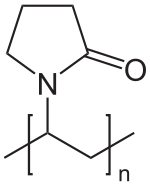SpillsMostOfIt
Self-Propelled, Portable Meat-Based Filtration Sys
- Joined
- 28/11/06
- Messages
- 1,690
- Reaction score
- 12
Looking through the ISPcorp website at the various documents about the Polyclar products, I see that Polyclar Brewbrite is a blend of PVPP and carrageenan, designed as a kettle addition when we (well, I) would normally just add Koppafloc.
I thought I might give this a shot next brew. Anyone tried it?
You have to login to get to the product documentation, but here's where the document is linked from...
http://online1.ispcorp.com/en-US/Pages/bvg...amp;prdId=72452
I thought I might give this a shot next brew. Anyone tried it?
You have to login to get to the product documentation, but here's where the document is linked from...
http://online1.ispcorp.com/en-US/Pages/bvg...amp;prdId=72452





